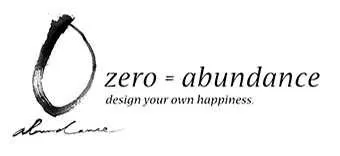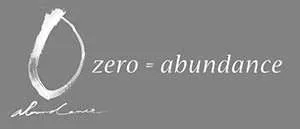![]()
We need to put ourselves in the shoes of the tomatoes to understand what happens when we internalize the power of zero. This brings us back to Zen. Zazen is a sitting with prescribed rules, and is a major meditation method for Zen.

Zazen au Dojo by Faverte (Own work) [GFDL or CC BY-SA 3.0], via Wikimedia Commons
Zazen has detailed rules to so that people can find tranquility and peace in “emptiness” – the ultimate state that emerges when we keep reducing external stimuli, such as pleasure or distraction. Here are some rules by the Soto-shu, one of the major Zen schools in Japan that focuses on zazen as a way to pursue religious truth.
Zazen rules (according to Soto-shu)
- Use a neat and clean room that is not too cold, not too warm, nor not too dark, not too bright
- Fold legs and hands and straighten your spine
- Keep your eyes slightly open – do not focus on any particular thing but keep everything in your field of vision
- Quietly make a deep exhalation and inhalation
- Do not concentrate on any particular object or control your thought
The rules above are just a part of the entire zazen protocol, which covers everything from how to maintain your surroundings, clothes and physical condition, to how to maintain your body (head, eyes, mouth, shoulders, abdomen, back, hands, legs and so forth) and mind during zazen. It is notable that the protocol has a long list of rules to regulate one’s posture. Zen leaders knew from experience that the way you sit directly affected how keenly one could concentrate, without feeling stressed nor bored. When we cannot rely on external stimulus to keep our mind filled and placid, it has to be our body and sensory capabilities that carry the load. Therefore, every single part of our body, and its position and angle matters. While you are not allowed to talk with others during zazen, you will be communicating with your body by activating various internal instruments in order to find the optimal point of arousal where you can feel focused, and yet peaceful.
But it’s not easy to stay at the optimal level of arousal, especially if you are not trained to do so. You can ask for a warning “Katsu!” using an “awakening stick” if you go off balance and become restless or sleepy.

Image “Zazen kai meeting” courtesy of Koufukuji
The awakening stick is the only external stimulus you can access during zazen. It helps you “calibrate” your senses and body, which are busy adjusting to the new environment. They have to be independent and self-satisfying, since now they cannot count on external help. But because your body is resilient and is always capable of developing new capacities, you would need less and less “Katsu!,” as you keep practicing zazen. Eventually, you would be able to stay in your optimal position with no external help.

Conceptual state of mind during zazen
As you become used to seated meditation, it will become easier for you to keep your mind clear and focused, without feeling too bored or too stressed. In addition, you will require less and less external stimulus, such as pleasure, to maintain your focus.
Through the zazen training, you learn how to maintain your optimal level of arousal for every part of your body and mind without relying on any external intervention.
This state can also be called mindfulness.
Do you see that mind-FULL-ness is actually achieved by “zero” – the empty state that emerges as we keep subtracting external stimuli? Fullness can arise from emptiness. What I saw in the people who appeared in Patagonia’s film “Worn Wear,” which we discussed in the Chapter 1-2 of this series, was this kind of mindfulness. The people in the film embraced raw and unaltered nature. They waded into often harsh environments, relying only on their body. And by doing so, their body and senses have become so self-reliant that they no longer need new clothes to feel boundless happiness. They are truly free.
They share something common with Zen priests, who often practiced zazen in the middle of raw nature. As they threw themselves into the heart of nature, they embraced the opportunities to face their own abilities and potential, by rejecting external help. And as they put themselves in tough situations, they discovered new and greater potential.
Ultimately, Buddhist practitioners attempted to achieve optimal arousal level literally with zero external stimulus. And the ultimate state is called Nirvana, in which you are completely free from pains and sufferings. You find completely neutral, eternal peace of mind.
This is the awakening fact that zero can trigger the boundless potential inside us. On the contrary, zero “zeros” in on unleashing our internal potential, which includes everything in our body, such as senses (vision, smell, hearing, taste and touch), muscles and mind. There may still be many abilities inside you that you don’t know yet. Each of them has enormous potential. Especially when they work in synergy (e.g. senses working with physical abilities), they elevate our state of mind.
This is the power of zero.










